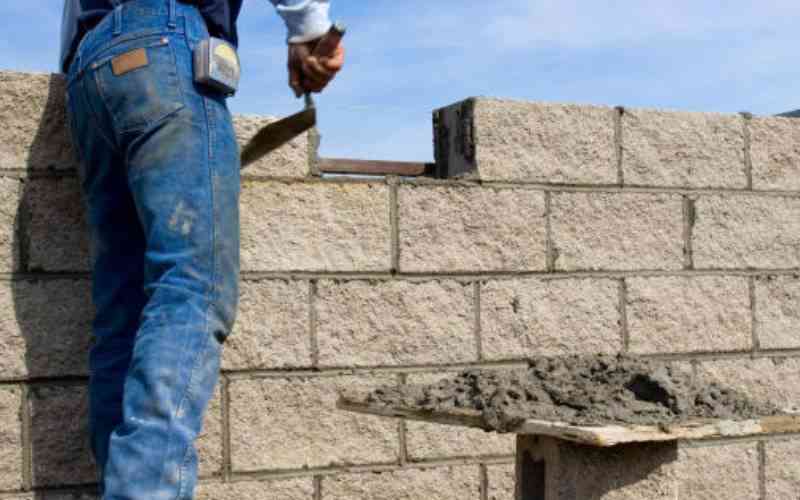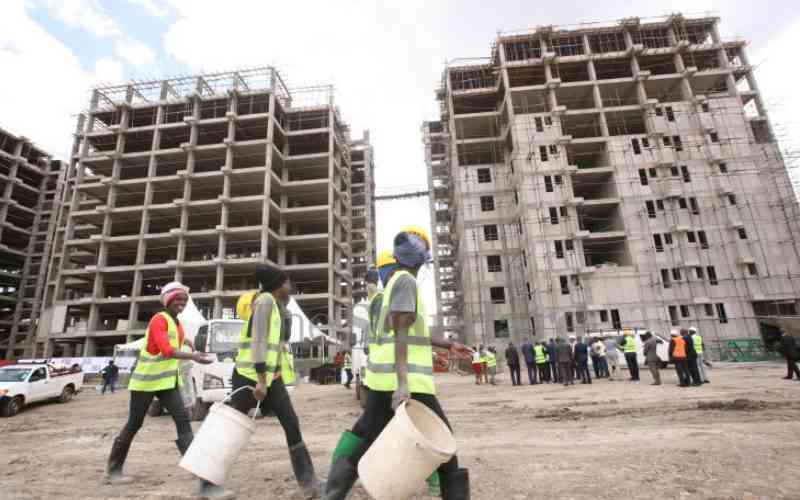A discussion on the importance of data in housing has revealed how cluttered the information is, which could be holding back the country from unlocking the sector’s potential.
Several agencies that took part in the recent discussion detailed the gaps in the sector even as some of them revealed plans of refining their data collection processes to make it more detailed.
Some of the gaps in data are how unsecured loans have crowded out mortgages and the lack of affordability classifications in loans from Saccos advanced for housing purposes.
Participants at the recent Affordable Housing Conference organised by the Kenya Mortgage Refinance Company included the Central Bank of Kenya (CBK), Kenya National Bureau of Statistics, State Department for Housing and Urban Development and the Sacco Society Regulatory Authority (Sasra).
Sasra Chief Executive Peter Njuguna while admitting that the authority is yet to collate data to indicate if their disbursements fit the affordable housing category said numbers show Saccos have disbursed Sh110 billion split between housing and land.
“Chances are they are not mortgage but incremental financing,” said Mr Njuguna.
“When the government does not coordinate the market to provide solutions, the market sorts itself out. And to correct that, we need to have a conversation on why there are no active mortgages, yet Saccos are loaning out money,” he added.
He noted that most of the loans disbursed by Saccos are for land and housing acquisition. Housing includes developments, residential, commercial and renovations.
Regarding the question whether it is affordable or not, he said the authority does not get individual loan reports from each institutions reporting to them.
“And perhaps that is where the conversation should go, so that we are able to figure out a Sacco in this quarter gave, for example, loans of up to Sh4 million and where they fit,” he said.
Mr Njuguna said it may be time for Sasra to consider collating this data in detail to determine the affordability or lack thereof of disbursements made by Saccos.
He said Saccos have a lot of land, which is an opportunity for them to partner with in the affordable housing sector.
The Sasra boss said with a clear policy on affordable housing, land is available for development.
“They can restructure member finances to accommodate this. It is a huge opportunity, but again it requires data to assess the demand,” he said.
The forum, which was attended by developers and financiers, among other players, raised concerns on the availability of data on unsecured loans, which they noted is a hindrance to growth of mortgages.
Stay informed. Subscribe to our newsletter
CBK Deputy Director and Head of Sector and Fiscal Analysis Division Dr Daniel Mwirigi said the regulator has issued guidelines that should determine how banks lend to the market. This includes digital lenders.
He said the guidelines were issued to ensure lenders take account of the risk factors. He, however, admitted that the regulator may not be aware of how unsecured loans are crowding out mortgages.
Mr Mwirigi said the query would be forwarded to the bank supervision department.
“But banks are free to do risk-based lending,” he said.
Some of these data gaps will be answered in the upcoming 2023/24 Kenya Housing Survey, which will be conducted by the Kenya National Bureau of Statistics and the State Department for Housing and Urban Development in partnership with the World Bank.
Isaac Ndegwa, from the KNBS Industrial Statistics Division, said the survey will measure the housing aspect but with other components to make the data detailed.
“One of the areas we are targeting is we need to get hold of financiers, developers and professional bodies because we want to get their view with regards to housing issues,” he said.
This will involve determining the actual gap in housing, which has for long been two million against the urbanisation rate of 4.4 per cent.
“If the requirement is 250,000 units every year and what we are getting from supply is about 50, 000, then that deficit has been incremental. These are no as statistical units we need to god own on the ground and take stock,” he said.
 The Standard Group Plc is a
multi-media organization with investments in media platforms spanning newspaper
print operations, television, radio broadcasting, digital and online services. The
Standard Group is recognized as a leading multi-media house in Kenya with a key
influence in matters of national and international interest.
The Standard Group Plc is a
multi-media organization with investments in media platforms spanning newspaper
print operations, television, radio broadcasting, digital and online services. The
Standard Group is recognized as a leading multi-media house in Kenya with a key
influence in matters of national and international interest.
 The Standard Group Plc is a
multi-media organization with investments in media platforms spanning newspaper
print operations, television, radio broadcasting, digital and online services. The
Standard Group is recognized as a leading multi-media house in Kenya with a key
influence in matters of national and international interest.
The Standard Group Plc is a
multi-media organization with investments in media platforms spanning newspaper
print operations, television, radio broadcasting, digital and online services. The
Standard Group is recognized as a leading multi-media house in Kenya with a key
influence in matters of national and international interest.








